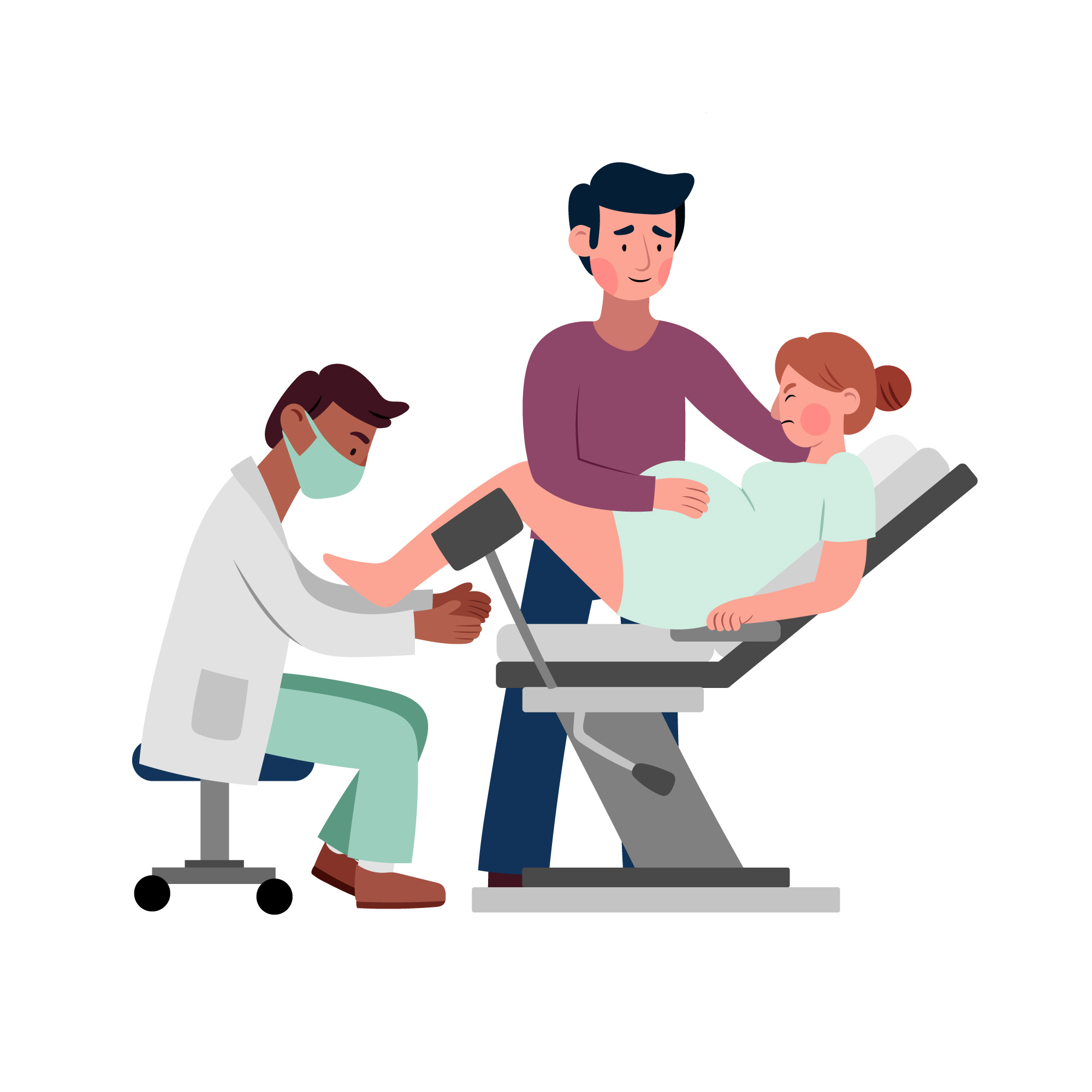
Normal Delivery
What is normal delivery process?
A vaginal delivery is when a person gives birth through their vagina. It’s the most common method of childbirth. During a vaginal birth, your uterus contracts to thin and open your cervix and push your baby out through your vagina (or birth canal).
What are the 3 types of delivery?
Vaginal delivery, C-section, VBAC and assisted vaginal delivery are examples of types of delivery.
Overview
- Vaginal delivery.
- Assisted vaginal delivery (vacuum or forceps).
- C-section (Cesarean birth).
- VBAC (vaginal birth after cesarean).

How do doctors do normal delivery?
The physician making episiotomy (a cut to widen the opening of the vagina) Continuous pushing by the mother to expel the baby out. The baby’s head comes out first, then the shoulders, and then the butt. Cutting the umbilical cord as a final step after the baby is completely out and has the first cry.
What is normal delivery time? Is normal delivery good for baby?
A major benefit when it comes to vaginal birth is that the child is exposed to what is known as “beneficial bacteria” in their mother’s birth canal. As the baby moves through the birth canal, fluid passes through the baby’s nose and mouth, making its way into the digestive system.
In a first pregnancy, labor usually lasts 12 to 18 hours on average; subsequent labors are often shorter, averaging 6 to 8 hours.
Types of Childbirth: Vaginal Delivery, Water Birth and more
- Vaginal Delivery. When a baby is delivered via the birth canal of the womb, the delivery is termed as vaginal delivery or natural birth
- Caesarean Section (C-section)
- Assisted Vaginal Delivery
- Water delivery
- Lamaze Technique
- Bradley Method
- Hypnosis
Which birth is more painful?
Ultimately, a natural birth may be more painful than a cesarean section. However, the pain after your cesarean section combined with the heightened risks to you and your baby may outweigh the initial pain of childbirth. Make sure you consult with your doctors to get the best possible advice for you.
Is it 9 months of pregnancy or 10?
Pregnancy is counted from the first day of your last menstrual period. This means an extra 2 weeks are counted at the beginning of your pregnancy when you aren’t actually pregnant. So pregnancy lasts 10 months (40 weeks)—not 9 months—because of these extra weeks.
Which week is best for normal delivery?
If there are problems with your pregnancy or your baby’s health, you may need to have your baby early. But if you have a choice and you’re planning to schedule your baby’s birth, wait until at least 39 weeks.
Benefits of vaginal delivery
Mother
Benefits for the mother include
- Avoiding surgery and resulting quicker recovery time and shorter hospital admission
- Quicker onset of lactation.
- Decreased complications in future pregnancies, including placenta previa
Infant
Benefits for the infant include:
- Develop microbiota from exposure to the bacteria from the mother’s vagina, while the microbiota of babies born by caesarean section have more bacteria associated with hospital environments
- Decreased infant respiratory conditions, including infant respiratory distress syndrome, transient tachypnea of the newborn, and respiratory-related NICU admissions.Improved immune function, possibly due to the infant’s exposure to normal vaginal and gut bacteria during vaginal birth.
Types of vaginal delivery
Different types of vaginal deliveries have different terms:
- A spontaneous vaginal delivery (SVD) occurs when a pregnant woman goes into labor without the use of drugs or techniques to induce labor and delivers their baby without forceps, vacuum extraction or a cesarean section.
- An induced vaginal delivery is a delivery involving labor induction, where drugs or manual techniques are used to initiate labor.
- Vaginal delivery can be either spontaneous or induced.
- An assisted vaginal delivery (AVD) or instrumental vaginal delivery occurs when a pregnant woman requires the use of special instruments such as forceps or a vacuum extractor to deliver her baby vaginally. It is usually performed when the pregnancy does not progress during the second stage of labor. If the goal is to avoid the adverse effects of pushing that a cardiac patient may experience, it may also be performed in this case.Both spontaneous and induced vaginal delivery can be assisted. Examples of instruments to assist delivery include obstretical forcepts and vacuum extraction with a vacuum cup device.A normal vaginal delivery (NVD) is defined as any vaginal delivery, assisted or unassisted.
Is normal delivery painful?
Yes, childbirth is painful. But it’s manageable. In fact, nearly half of first-time moms (46 percent) said the pain they experienced with their first child was better than they expected.
